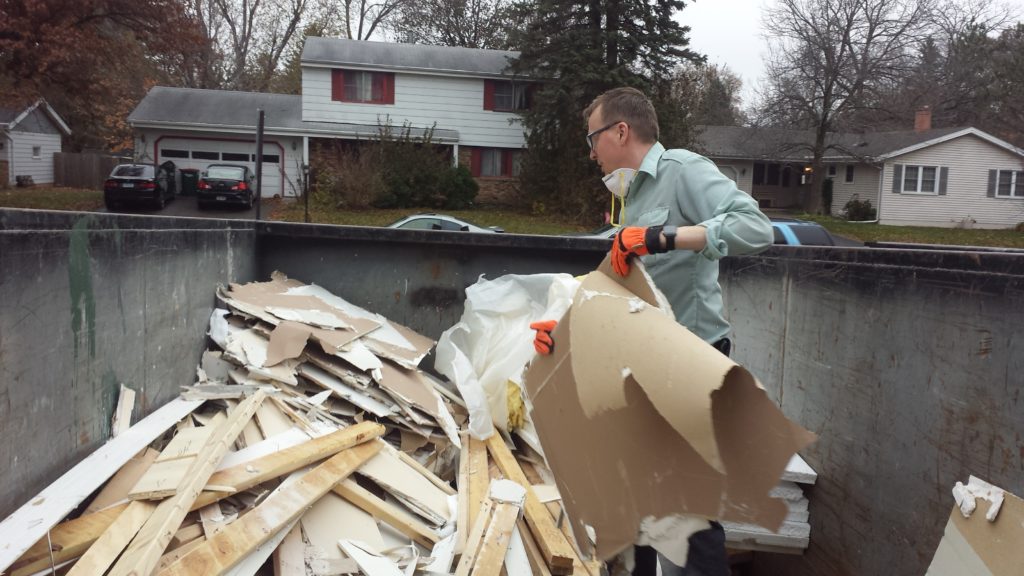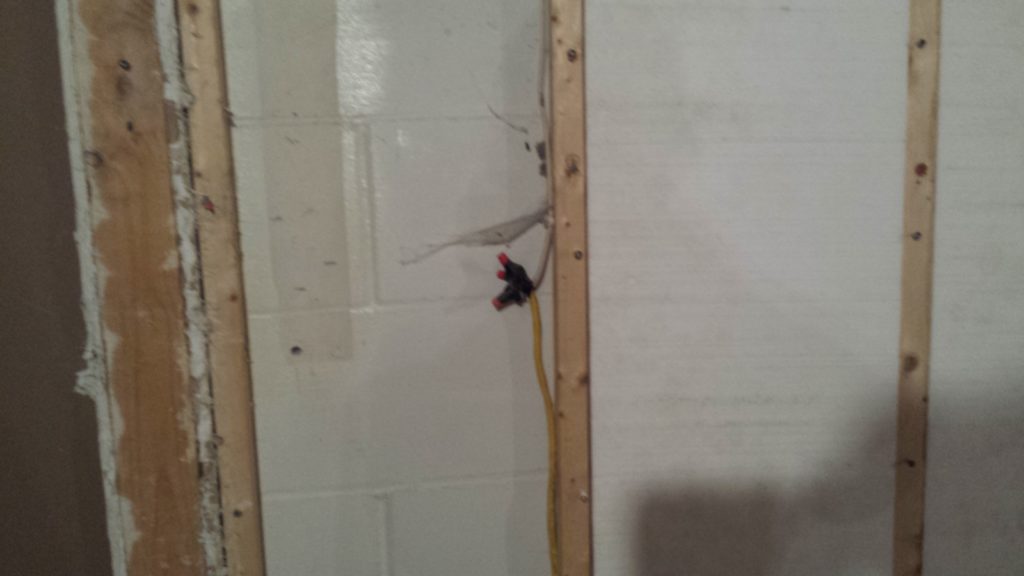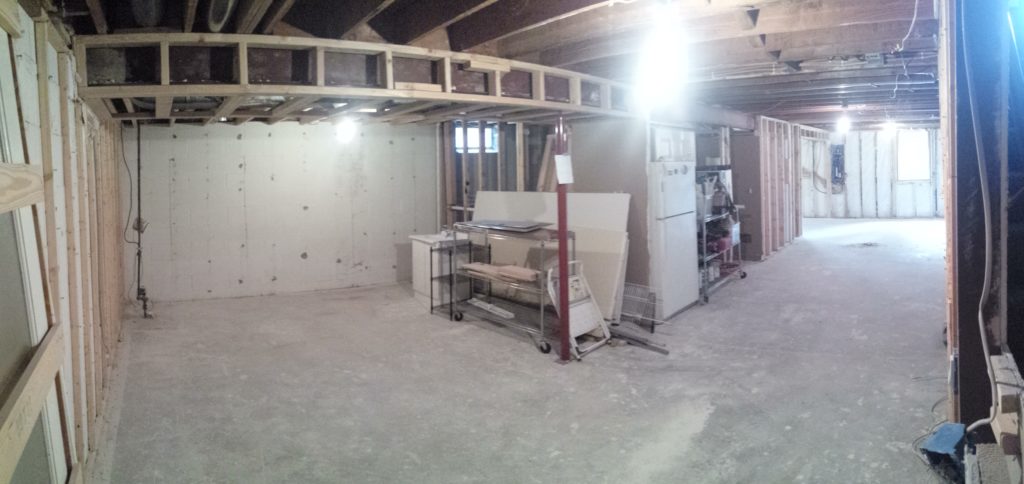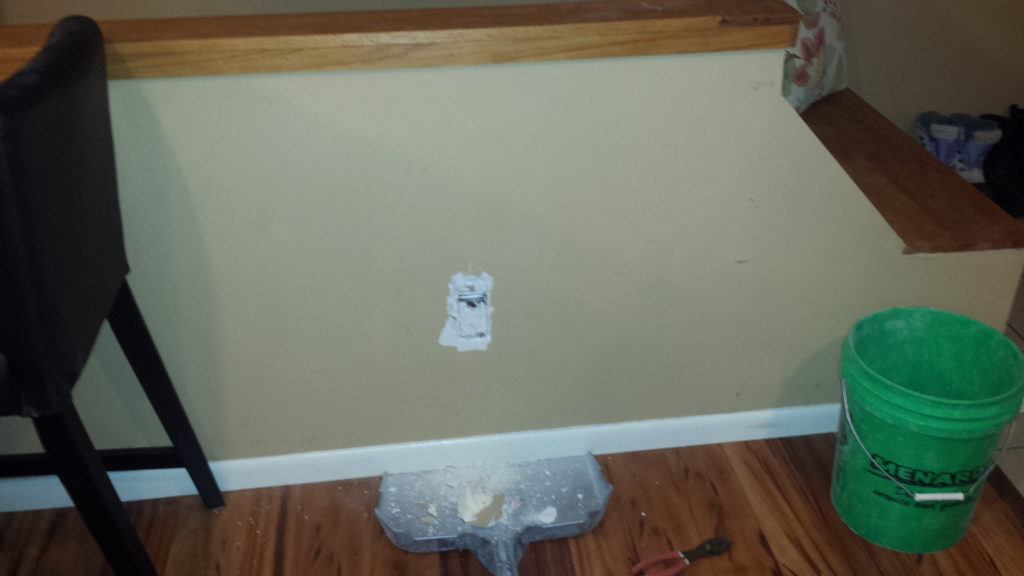While doing some demolition, I discover that the flipper framed lumber around a support column that was bigger than the lumber, leaving no room for drywall. So the flipper caked huge globs of drywall mud onto the column itself. In some places, the mud is over 1″ thick. As it dried, the moisture in the mud started rusting the support column.
Month: November 2017
Basement demolition leads to more surprises
The outer walls of the basement need demolition to prepare for the new drain tile and sump pump. Friends John Peters and Corey Benson give me a hand. Naturally, we find several more building code violations that were hidden by the flipper, starting with this wire splice that doesn’t have a junction box and was covered with drywall.
Corey finds two more junction boxes covered with drywall or caked with mud.
Here, the flipper did a messy job punching a hole in the drywall to pass some wiring through. This is the wiring that runs around the room behind framing and was stuffed under the baseboards.
We need to remove an unused cast iron drain pipe, so I excavate the concrete to expose the junction. Underground I discover legacy clay drain tile. A section of the clay drain tile has been broken out to make way for the cast iron pipe.

All of this needs to come out to make way for the new drain tile system.
Self-leveling concrete was poured too thick
My original general contractor used a very large batch of self-leveling concrete on the bathroom and laundry room floors. One of the reasons it failed is because he poured it too thick, and never cured properly. It will all have to be demolished to make way for the new drain tile anyway.

Although we’ve already roughed in the bathroom framing and plumbing, it will have to be demolished to make way for the drain tile installation. Since we’ll have to rebuild it anyway, Amáda and I consider moving the wall about 16″. This will make the bathroom bigger, and will simplify an overhead white drain pipe.
Cast iron pipe removed
My plumber cuts out the old cast iron drain pipe and caps off the end. This would have been in the way of the drain tile.
































